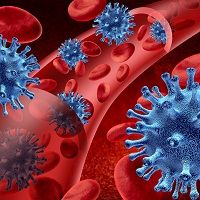Article
Contagion: When Does Antibiotic Treatment Do More Harm Than Good?
Author(s):
The CDC's Lauri A. Hicks, DO, captain, US Public Health Service, director, Office of Antibiotic Stewardship, explains how antibiotics can be harmful if they are not used appropriately.

Visit our sister site, Contagion Live, to watch a video interview with Lauri A. Hicks, DO, captain, US Public Health Service, director, Office of Antibiotic Stewardship, medical director, Get Smart: Know When Antibiotics Work, Division of Healthcare Quality Promotion, Centers for Disease Control and Prevention. In the interview, Hicks talks about patient perceptions of antibiotic use and the need to educate consumers and clinicians about appropriate antibiotic use.
According to Hicks, “However, what I think is really important is that when someone is thinking, ‘I think I might have a cold and I need to go to the doctor and I’m interested in seeing if an antibiotic would work for this infection.’ I think the most important thing to realize at that stage is, if you don’t have a serious infection or a bacterial infection that requires an antibiotic, antibiotics can actually do more harm than good.
I think for a long time there’s been a perception that antibiotics are harmless, that we can take them just like we do like a multi-vitamin and it will make us better. We need to be really cognizant and really understand that antibiotics have the potential not only to lead to adverse events, like the rashes and the diarrheas, but the more serious things that I am really much more concerned about, that are happening more frequently in the community. For example, Clostridium difficile infections, which we’ve talked about as a potentially deadly diarrhea. We’re seeing the rate of these infections increase over time and we’re really concerned that if we don’t really get really the message out there—that there’s a potential downside to antibiotics—there will continue to be this patient demand that drives unnecessary antibiotic use.”
To watch the video, and read the full text of Hicks’ remarks, visit Contagion Live.


